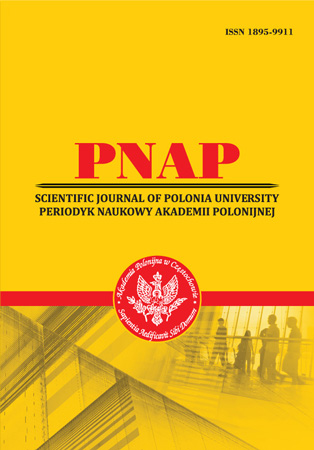UNDERSTANDING THE ESSENCE OF UNIVERSITY EDUCATION AND CLASSICAL UNIVERSITY EDUCATION
Abstract
The article deals with the issue of university education and classical university education. The essence of such concepts as “university education” and “classical university education” has been characterized. There have been analyzed history, essence and content of university education as one of the most important component of higher education. A university is the oldest and most common type of higher education institution. Therefore, it is considered appropriate to analyze the content, peculiarities and trends of higher education development as a whole on the example of university education. The main task of the university is to awaken the desire for science in the youth, to help the graduate transfer scientific ideas to specific fields of knowledge and social practice. A classical university unites three types of generally significant social institutions: science, education and culture. University education is not only a special institution designed for education. It is considered to be an important component of society culture, a complete sociocultural image. There have been used different methods in the study: general scientific (analysis and synthesis), methods of theoretical research, terminological, retrospective logical and systematic analysis, continuous sampling method alongside definition analysis.
References
2. Dvortseva, H. (2011). Klasychnyi universytet yak kulturne seredovyshche osobystosti [Classical university as a cultural environment of an individual]. Psykholoho-pedahohichni problemy silskoi shkoly. № 39(2). [in Ukrainian]
3. Gessen, S. I. (1923). Osnovy pedagogiki. Vvedenie v prikladnuyu filosofiyu [Fundamentals of Pedagogics. Introduction to Applied Philosophy]. Berlin. Slovo. [in Russian]
4. Jilek, L. (1983). Historical compendium of European Universities. Geneva.
5. Khyzhniak, Z. Y. (1988). Kyevo-Mohylianskaia akademyia [Kyiv-Mohyla Academy]. K.: Vyshcha shkola. [in Ukrainian]
6. Kugai, K. B. (2016). Analiz istorii vynyknennia ta vzhyvannia terminu «klasychnyi universytet » v Ukraini [Analysis for the history of emergence and use of the term “classical university” in Ukraine]. Labirynty realnosti: zb. naukovykh prats (za materialamy III Mizhnarodnoi naukovo-praktychnoi konferentsii 30-31 zhovtnia 2016 roku). Za zah. red. d.filos.n. Zhurby M.A. Montreal: SPM «ASF». [in Ukrainian]
7. Pelikan, Y. (1992). The Idea of the University. A Reexamination. Yale University Press.
8. Postanova Kabinetu Ministriv Ukrainy vid 5 veresnia 1996 r. “Pro zatverdzhennia Polozhennia pro derzhavnyi vyshchyi navchalnyi zaklad” [Resolution of the Cabinet of Ministers of Ukraine dated September 5, 1996 On Approval of the Regulation of the State Higher Educational Institution]. Retrieved from: https://zakon.rada.gov.ua/laws/show/1074-96-%D0%BF#-Text [in Ukrainian]
9. Sydorchuk, N. H. (2014). Universytet yak sotsialno-kulturolohichnyi fenomen [The university as a socio-cultural phenomenon]. Novi tekhnolohii navchannia: nauk.-metod. zb. Instytut innovats. tekhnolohii i zmistu osvity Ministerstva osviti i nauky Ukrainy. K. № 81. [in Ukrainian]
10. Turkot, T. I. (2011). Pedahohika vyshchoi shkoly [Higher school pedagogics]. Navch. posib.: rekom. MON Ukrainy dlia studentiv mahistratury vyshchykh navchalnykh zakladiv nepedahohichnoho profiliu. Kherson. [in Ukrainian]
11. Zakon Ukrainy “Pro vyshchu osvitu” [The Law of Ukraine On Higher Education] Retrieved from: https://zakon.rada.gov.ua/laws/show/1556-18/page2#Text [in Ukrainian]
Abstract views: 317 PDF Downloads: 251







